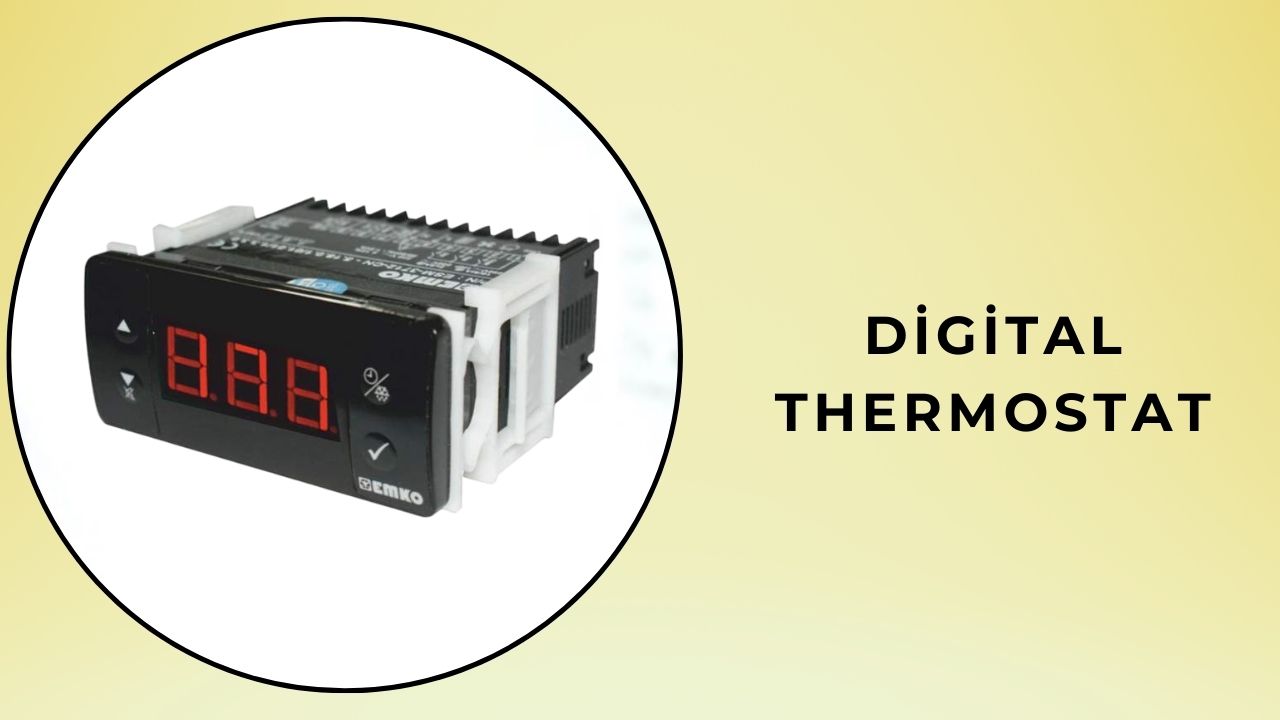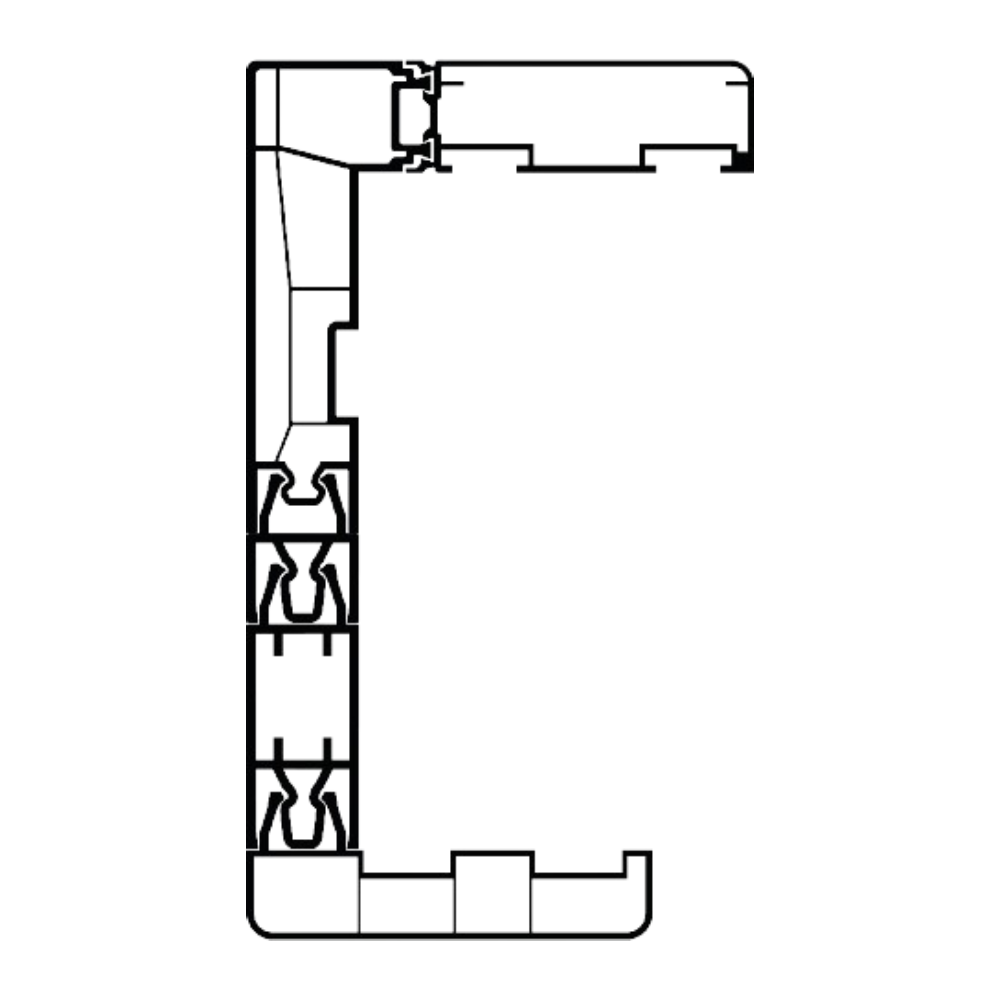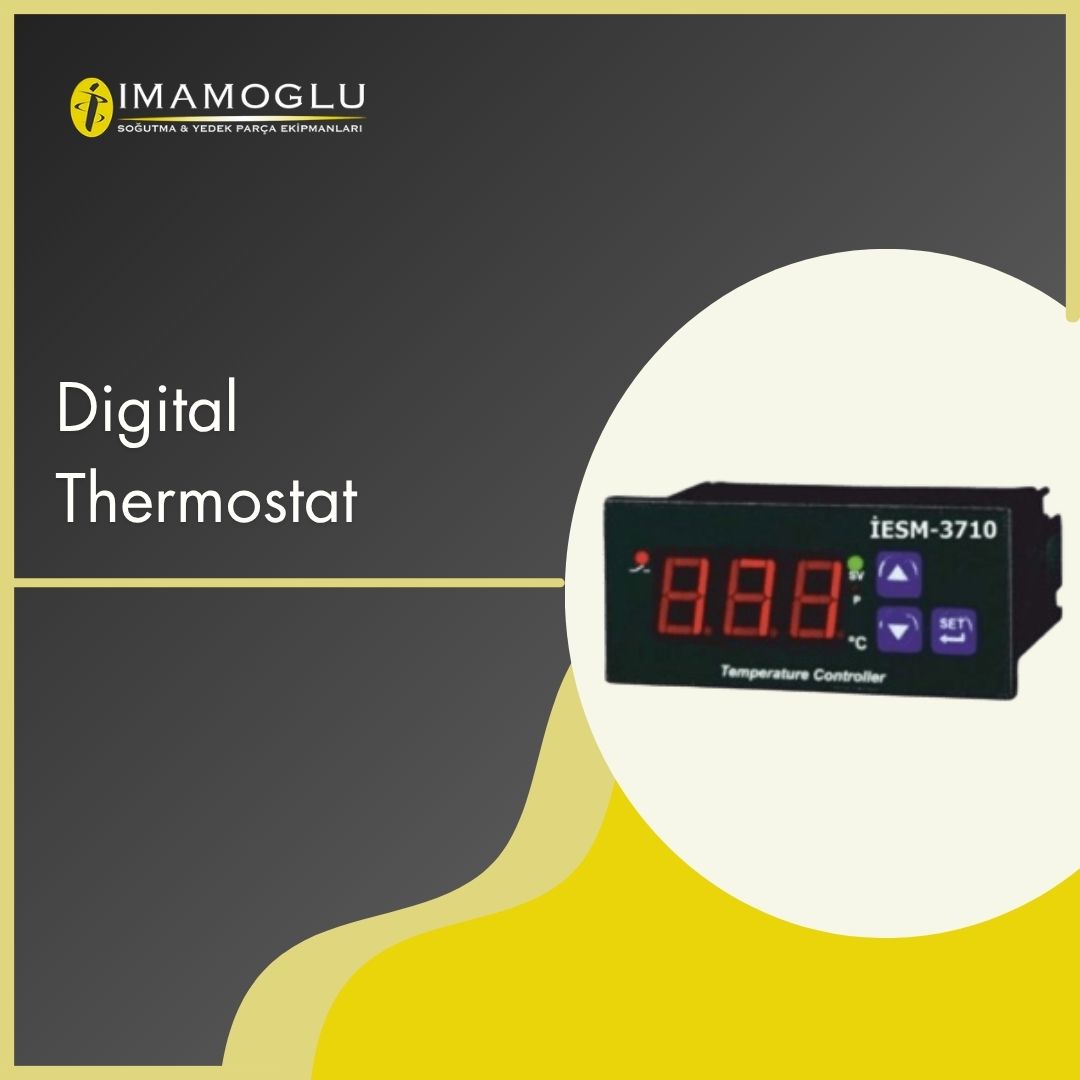Digital Thermostat
Table of Contents
- What is a Digital Thermostat?
- Key Features of Digital Thermostats
- Applications of Digital Thermostats
- Benefits of Digital Thermostats
- Tips for Choosing the Right Digital Thermostat
- Installation and Maintenance of Digital Thermostats
- Innovations in Digital Thermostat Technology
What is a Digital Thermostat?
A digital thermostat is a modern device that precisely measures ambient temperature and manages heating and cooling systems with smart control mechanisms. Unlike traditional analog thermostats, digital thermostat models feature user-friendly interfaces, programmable settings, and often digital displays. These devices are used in a wide range of settings, from homes to commercial buildings, industrial facilities, and hospitals. With designs focused on energy efficiency, these thermostats optimize energy consumption and deliver cost savings. Digital thermostats continuously monitor environmental conditions through temperature sensors and automatically activate or deactivate heating and cooling equipment to maintain the desired temperature range. Some models offer Wi-Fi connectivity and mobile app integration, enabling automation features that allow users to control the device remotely. This makes digital thermostatsa popular choice in modern smart home systems. Providing both comfort and efficiency, these devices represent one of the most significant innovations in temperature control technology today.

Key Features of Digital Thermostats
Digital thermostats stand out with their advanced features. First, they use highly accurate temperature sensors to measure ambient conditions with precision, ensuring heating and cooling systems operate only when necessary, thus promoting energy efficiency. Programmable models allow users to set different temperature preferences for specific times. For instance, lowering the temperature at night in a home or reducing energy use in workplaces after business hours becomes effortless. Another key feature is their smart control capabilities. Certain digital thermostat models employ artificial intelligence algorithms to learn user habits and suggest optimal temperature settings automatically. Wi-Fi-enabled models can be controlled remotely via mobile apps or voice assistants. Their display interfaces allow users to easily view information such as temperature, time, and energy consumption. Moreover, some devices integrate with automationsystems, becoming part of broader smart home or building management networks.
Applications of Digital Thermostats
Digital thermostats are utilized across a wide range of sectors and environments. In residential settings, they control heating and cooling systems to create comfortable living spaces. Models integrated with smart home systems help users monitor and optimize energy consumption. In commercial buildings, from offices to hotels, shopping malls to restaurants, digital thermostats enhance customer comfort while reducing operational costs. In industrial facilities, digital thermostats ensure precise temperature control for manufacturing processes. For example, in food processing plants or pharmaceutical production, maintaining specific temperature ranges is critical. In the healthcare sector, hospitals and laboratories rely on digital thermostats for the reliability of heating and cooling systems. Additionally, in high-tech environments like data centers, automation-enabled thermostats maintain optimal conditions to ensure equipment performance.
Benefits of Digital Thermostats
Digital thermostats offer significant benefits for both individual users and businesses. Their primary advantage is energy efficiency. Precise temperature control and programmable features prevent unnecessary energy consumption, lowering utility bills. For example, automatically reducing the temperature at night or when a home is unoccupied can lead to substantial savings. Smart control features enhance user comfort. Remote access allows users to activate heating or cooling systems before returning home. Additionally, the modern designs of digital thermostats provide an aesthetic appeal, blending seamlessly with various interior styles. Integration with automationsystems, particularly in large facilities, enables centralized control and boosts operational efficiency. Eco-friendly models reduce carbon footprints, contributing to sustainability goals.
Tips for Choosing the Right Digital Thermostat
Selecting a digital thermostat should be based on its intended use and the specific needs of the environment. First, ensure compatibility with the heating and cooling systems. For instance, a thermostat designed for a boiler system may differ from one suited for air conditioning. Programmability is crucial for energy efficiency; opt for models that offer daily or weekly scheduling. Smart control features are a priority for modern users. Wi-Fi connectivity and mobile app support enable remote management. The device’s user interface should be intuitive and easy to navigate. Models that display detailed energy consumption data are advantageous for tracking energy efficiency. Finally, consider the manufacturer’s technical support and warranty terms for long-term reliability.
Installation and Maintenance of Digital Thermostats
Proper installation is essential for the optimal performance of a digital thermostat. The device must be fully compatible with the heating and cooling system, and a professional technician should ensure correct wiring and connections. The thermostat’s placement is also critical; it should be installed away from direct sunlight or drafts to ensure accurate readings. Maintenance ensures the longevity of digital thermostats. Regularly clean the screen and sensors to remove dust. Software updates, particularly for smart controlmodels, optimize performance. For battery-operated devices, check and replace batteries as needed. An annual professional inspection is recommended to verify the device’s functionality.
Innovations in Digital Thermostat Technology
Digital thermostat technology is rapidly evolving, introducing new features. AI-powered models analyze user behavior to recommend energy efficiency-focused settings. Internet of Things (IoT) integration enables automation within larger networks. For instance, a digital thermostat can adjust heating and cooling based on weather forecasts. Voice assistant-compatible models simplify the smart control experience. Additionally, digital thermostats integrated with energy monitoring systems provide detailed consumption reports, helping users optimize usage. Eco-friendly materials and low-energy designs enhance the sustainability of these devices. In the future, digital thermostat technology is expected to offer even greater personalization and automation.








